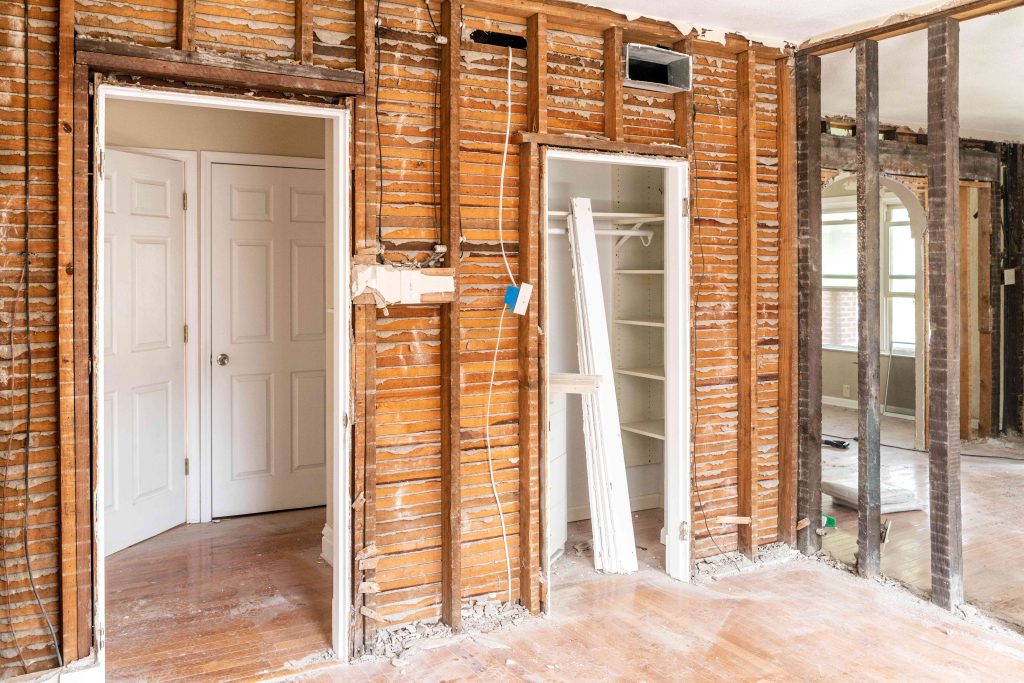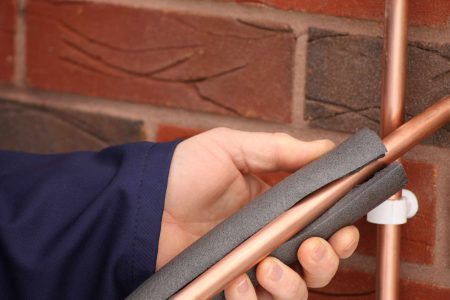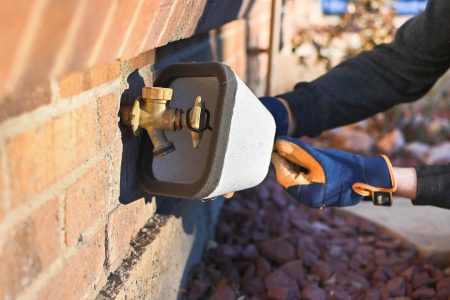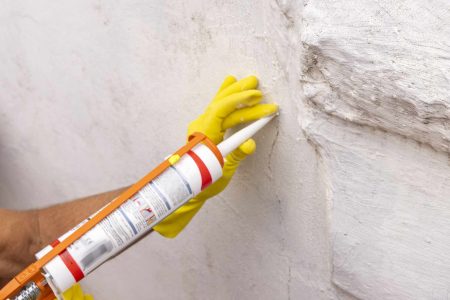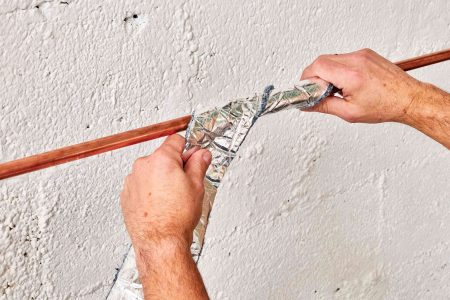Homes come in all varieties to fit all needs. Due to the broad choice of existing housing stock, plus the high cost of building a new-construction home, most would-be homeowners buy existing houses. And this is not a bad choice at all. Most houses are durable enough to last for decades, can readily be remodeled, and they have the potential for increasing in value.
Yet building your own home (meaning to hire a general contractor to complete a new-construction home) has an undeniable allure. A new house can be designed exactly for your needs. It comes with few, if any, hidden problems. Hazardous materials such as lead-based paint and asbestos are non-existent. New advantages are built into the house, and old problems are left out. So, it’s no surprise that most people would choose to build their own home rather than buy an old home if all other factors were the same.
Should You Act as Your Own Contractor?
When you decide to build your own home, it is generally best to do so through a licensed general contractor.
Many states do allow homeowners to act as a contractor for their own home. With this arrangement, you become what is frequently termed an owner-builder. In order to contract out for a large-scale project such as a house (rather than an outbuilding or small, lower-cost building), you need to apply for an owner-builder exemption and to sign the building permit application yourself.
Yet very few people are qualified to act as their own general contractor (GC). Building a house requires you to pull together many strings and make sure that they coordinate in a myriad of ways. Projects and subcontractors have to be scheduled in the correct order, interspersed with numerous municipal inspections. You’ll need to know the building code. Plus, it helps immensely to have a network of subcontractors who you rely on to perform trustworthy work.
The person that does all of that is a general contractor. No general contractor overseeing home construction comes cheap. Most general contractors charge between 10-percent to 20-percent of the overall cost of the home build, and this includes permits and materials. It’s a fee that most amateur home-builders find well worthwhile, especially if they have any tried-and-failed experience at general contracting.
-
Save enormous costs by reducing overall cost by 10 to 20 percent
-
More control of timing, especially if the build is a slow, open-ended project
-
Lose out on the GC’s network of subs
-
No personal experience with permitting office
-
Do not receive wholesale discounts
-
Little know-how of coordinating the steps
Save Money With Sweat Equity
If you are intent on pitching in and helping contractors as you build your own house, there is one way to do it: sweat equity in the form of smaller, individual projects.
Late-stage, post-contract projects can be done by the homeowner rather than by the contractor. These late-stage projects are better for do-it-yourself work because you do not risk slowing down the house building project:
- Building patios and walkways
- Planting trees, shrubs, and grass
- Painting the house exterior
- Painting the house interior
- Installing window treatments
- Installing carpeting
- Finishing the basement
9 Quick Tips for Hiring and Working with Contractors
Prepare the Home Site
First, it’s time to get situated—literally and figuratively. Not only are you getting your project straight in your mind and on paper, but you are siting your intended home on its intended spot.
- Clear the building site of brush and other debris, down to ground level and at least 25 feet around the planned house perimeter.
- A land surveyor stakes out the lot, based on original plot drawings that indicate the property boundaries.
- Make alterations to the site’s topography if necessary to alter the water flow across the site: This often requires a contractor with earth-moving equipment.
- Order a dumpster to handle refuse during the building project.
- Order one or more portable toilets for the workers.
- Order temporary utilities from the power company.
- Hire an electrician to hook up a temporary electrical panel, which is usually mounted on an existing utility pole.
Pour Concrete Footings and Foundation
The building site takes shape with the excavation and installation of foundations and slabs. This work is done by excavation contractors and foundation specialists—an entirely different group of contractors than the carpentry crews that will soon be on-site.
Footings and foundation comprise a large part of your entire house building cost. This means that large payment draws happen soon after the project begins.
- The contractor digs trenches that are deep enough for frost footings. Foundations need to rest below your area’s expected frost line to prevent frost-heave, which can damage your home.
- Inspectors arrive to check the dimensions of footing trenches.
- The contractor pours concrete for footings.
- Footing drains are constructed, and these are designed to drain water away from the footers and to protect them.
- The contractor builds vertical foundation walls resting on the footings, using either poured concrete or concrete cinder blocks. Other types of foundations are sometimes used, though they are rare.
- The foundation is waterproofed all the way up to the finished grade level. Holes are created in the foundation wall to allow for the routing of water supply and drain lines.
Install Plumbing and Electrical
If you are laying a slab-type foundation, you will bring in plumbers and electricians to rough-in some of the services prior to pouring that concrete slab:
- Pipes are laid by plumbers, and these pipes are later covered up.
- If electrical lines will run through the concrete slab via metal conduits, now is the time for these conduits to be run.
Pour the Concrete Slab
- For a house slab, the contractor will first install slab foam board insulation.
- A 4-inch minimum gravel base goes over the foam board, forming the base for the concrete.
- A plastic vapor barrier comes next.
- Wire mesh reinforcement is next laid down and positioned, so it is raised slightly above grade. This will allow the reinforcement to sit in the middle of the concrete layer, where it will offer the most strength reinforcement.
- The contractor now pours the concrete slab, likely from ready-mix trucks that deliver a large quantity of concrete.
- If you are building a garage or basement, this is also the time to pour concrete in those places. It is expensive to bring the concrete contractor back for another pour, so it is beneficial to do all of your concrete work at once.
Frame, Side, and Roof the House
With the excavation, foundation, and concrete work done, soon you will start to recognize your project as a house. The framing carpenters will arrive to put up the lumber framework for the floors, walls, and ceilings, and then move to the sheathing, siding, and roofing installation. This work can happen with remarkable swiftness. In the space of a week or two, you may suddenly recognize this structure as being a house, complete with walls and a roof.
- Work up a framing order of needed lumber, nails, builder’s felt or house wrap, and adhesives, based on your building plans.
- When good weather arrives, the carpenter crew arrives to frame the house walls, including the floor, ceiling, and roof skeleton: Framing is the basic shell of the house, minus siding and roof surface. The rough openings for windows, doors, and skylights will be framed at this time. The basic sheathing of the wall and roof surfaces concludes this stage.
- Install the windows, doors, and skylights: Usually, this will be done by the same carpentry crew that did the framing, though sometimes a manufacturer’s crew will come in to do this work. It is also a job some homeowners can tackle. At this point, when the building is sheathed, and doors and windows are installed, the subcontractors doing the electrical and plumbing work may now arrive to begin the rough-in portion of their job.
- The finished siding surface is now installed over the sheathing after the house sheathing is first wrapped with some form of weather guard membrane: Again, this work is often done by the same contractor who did the framing and sheathing.
- Finally, the roofers come in to complete the application of roof flashings and the shingles or other finished roof surfaces: The basic shell of the house is now completed.
Install Electrical, Plumbing, and Insulation
Now the interior work on your house begins with the arrival of masons, electricians, plumbers, and HVAC specialists.
- Masons build the chimney if your home is designed to have one. This generally involves the application of brick or stone veneer over a base of concrete block that was laid by the foundation contractor.
- Electricians and plumbers do the rough-in work for electrical circuits, plumbing pipes, and HVAC system ductwork. This work is easier without the wall, flooring, and ceiling surfaces in place. After completion, these contractors will return after the walls and ceilings are in place, to complete the final connections of various fixtures.
- Inspections are made of rough-ins. Arranging for permits and inspections are handled by the contractor. If you are tackling this work yourself, the responsibility for inspections falls on you.
- Install the insulation in the walls and attic. This is sometimes done by the carpentry crew but usually by a specialty insulation contractor.
Hang Drywall and Install Trim
The interior will begin to look finished as wall and ceiling surfaces are installed.
- Drywall is hung throughout the house: All of the wall and ceiling surfaces are usually hung before any further work continues.
- The drywall seams are taped, mudded with joint compound, and finish sanded.
- All interior walls and ceilings are primed: This is often done with spraying equipment and happens very quickly, as there is no need to worry about trim moldings and floor surfaces.
- All trim moldings are installed, including door and window casings and crown moldings.
- All cabinetry is hung in bathrooms, kitchens, and other areas.
Paint the Walls and Perform Finish Work
After the messy work of installing the drywall and priming the walls is done, it is time to bring in the painter.
- Walls are painted and ceilings are either painted or finished with texture. These are jobs that homeowners can tackle themselves to save money. But for homeowners accustomed only to painting a room or two, keep in mind that painting an entire house is an enormous task.
- The kitchen and bathroom countertops are installed. This job is done by countertop specialists who both fabricate and install the countertops.
- The kitchen and bathroom cabinets are installed. Specialty companies supply and install kitchen and bath cabinets.
- Installation and hook-up of finished electrical and plumbing fixtures are done: Due to the fact that there are code issues involved here, only the most skilled do-it-yourselfers should tackle this.
Install the Flooring
Lay down the finish flooring (or floor covering) surfaces throughout the house. Floor covering options include carpeting, hardwood, laminate flooring, ceramic tile, luxury vinyl plank, and engineered wood flooring. This is usually a job for yet another subcontractor, though homeowners can tackle the installation of some sections of the flooring.
Clean up the worksite by putting all acceptable debris into the dumpster. The contractor will hire a company that specializes in cleaning up after construction work.
Final Home-Building Matters
- Complete exterior landscaping. To save money, this can be a do-it-yourself project. Or you can hire a landscaping company to design and install the landscape for you.
- Remove the dumpster: Call the disposal company to pick up the dumpster and specify that you do not need a replacement.
- Arrange for final inspections by the permitting agencies.
- Schedule a final walk-through if you are using a general contractor.
- Arrange a final inspection by your lender, if you financed the building of your house with a construction loan.
-
What are the advantages of building a new home?
Simply put, everything about it is brand new! A new home will have the most up-to-date technology and energy efficiency, plus you can design it the way you want it, from the layout, picking the colors, flooring, and more.
-
What are the disadvantages of building a new home?
Building takes time, so you won’t be able to move in right away, and it could potentially take longer to build than projected. There might be some unexpected additional costs that crop up also.
-
How can you save money when building your home?
If you’re handy around the house, you can save money by taking on some of the smaller projects yourself. Once the house is built, step in and do the landscaping, and build the patios and walkways. You can also paint the inside and outside of the house, and lay the flooring.
Read the full article here



